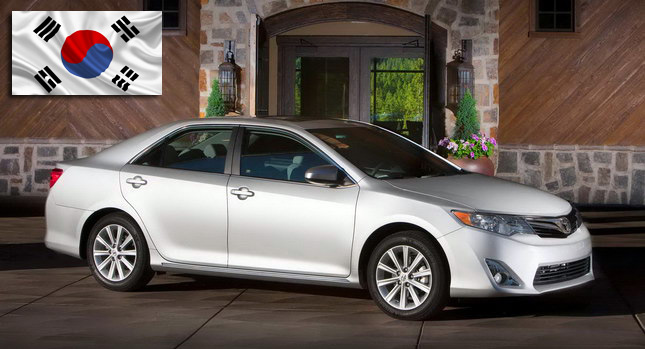Until recently, South Korea had a taxing policy that made importing cars nigh impossible. It was a means to protect its homegrown automakers, of course, i.e. Hyundai and Kia, from foreign competition. Now, though, it has opened its doors to foreigners, which is fair, as the Koreans face no such restrictions in regions such as North America, Europe or Asia.
Toyota, for one, only entered the South Korean market in 2010. In 2011, it managed to shift 5,020 vehicles. Last year, it more than doubled that number, to 10,795 and, despite the strong competition from German rivals, increased its market share from 4.78 to 8.25 percent.
Its biggest victory, though, came a few days ago when the Camry mid-size family sedan won the 2013 “Korea Car of the Year” award. It was a surprise result, even to the winner: Toyota Korea president Hisao Nakabayashi, who accepted the awards for the Prius and the Lexus GS in fluent Korean, requested a translator for the Camry award as he was overcome with emotion.
“Thank you. I feel great honor to win this award. It is really unexpected”, said Nakabayashi when he accepted the award during the ceremony that took place in Seoul last week.
Incidentally, the Korea Car of the Year award was established by the country’s Automobile Journalist Association the same year that Toyota entered the market. The past two winners were Kia’s K5 in 2011 and the Hyundai i40 in 2012.
Hyundai, which apparently was tipped off about the results, was apparently so shocked by being beaten in its home turf by its Japanese rival that none of its officials attended the ceremony.
A Hyundai official, who wished to remain anonymous, told The Korea Herald: “We are perplexed. It would have been a lot better if a Korean brand won the top prize.” The new Santa Fe that was handed a “special award” probably added insult to injury rather than appease the Korean automaker executives.
Toyota found a way to circumvent the strong yen: it decided that the new Camry, which was introduced last January by company CEO Akio Toyoda personally, would be imported from the U.S. instead of Japan.
The thinking was that, in doing so, Toyota would take advantage of both the Korea-U.S. free trade pact and the favorable won-U.S. dollar exchange rate and keep prices down. They were right: the Camry ended 2012 as the second best-selling imported car in the country behind the BMW 520d.
Hyundai, on the other hand, seeing that imports are encroaching on its market share, has already reduced prices on its flagship models and will ramp up its marketing efforts in its home market.
It may have to face even stiffer competition, though, as other Japanese automakers, which until now were under-performing, are preparing to follow its lead.
“We were definitely encouraged by the award”, commented the PR official of a Japanese automaker who, also, wanted to remain anonymous. “It will hopefully renew the image of Japanese carmakers overall. We are planning aggressive marketing activities this year.”
By Andrew Tsaousis
Thanks to Ricardo Y. for the tip!
PHOTO GALLERY













